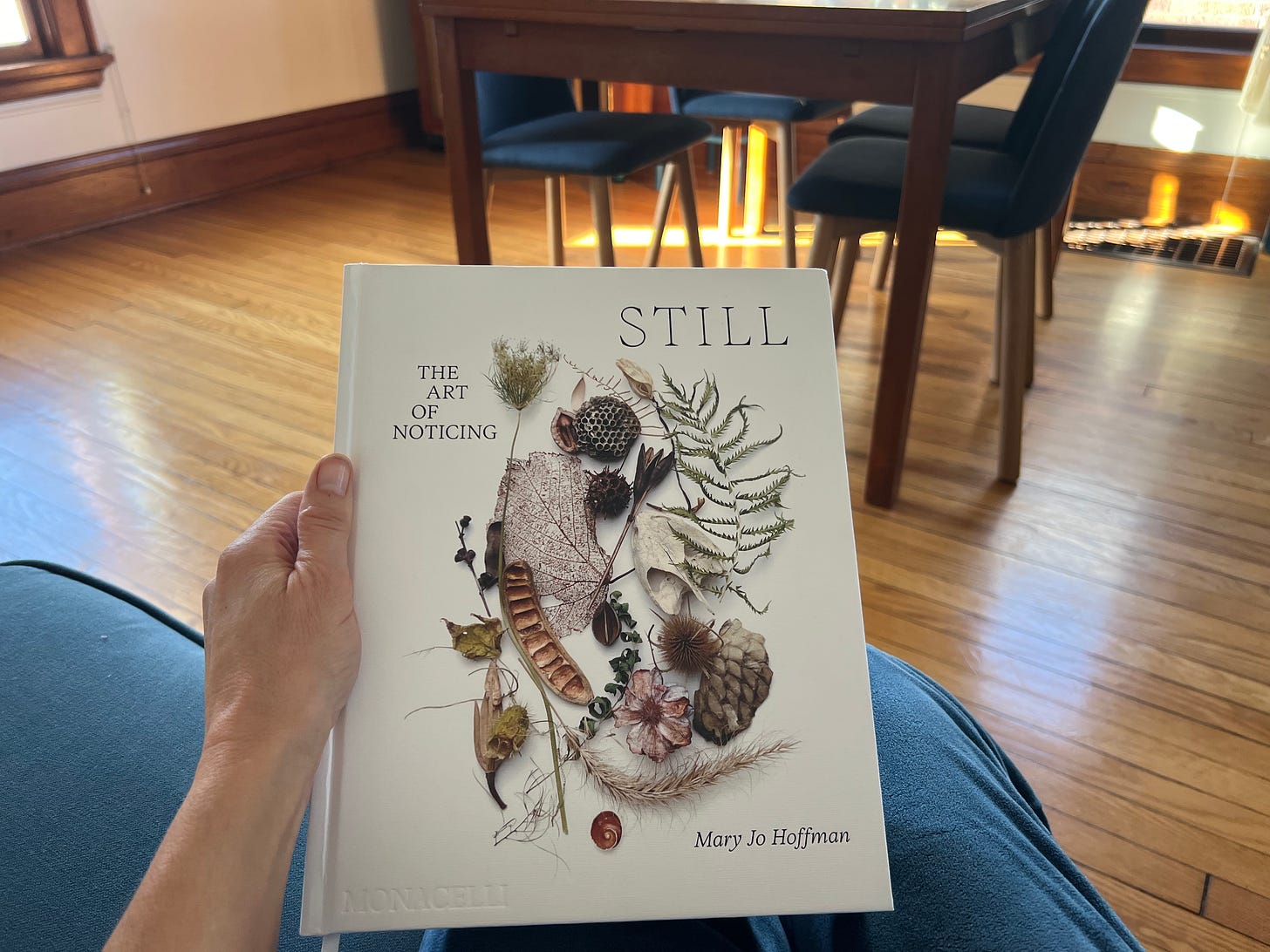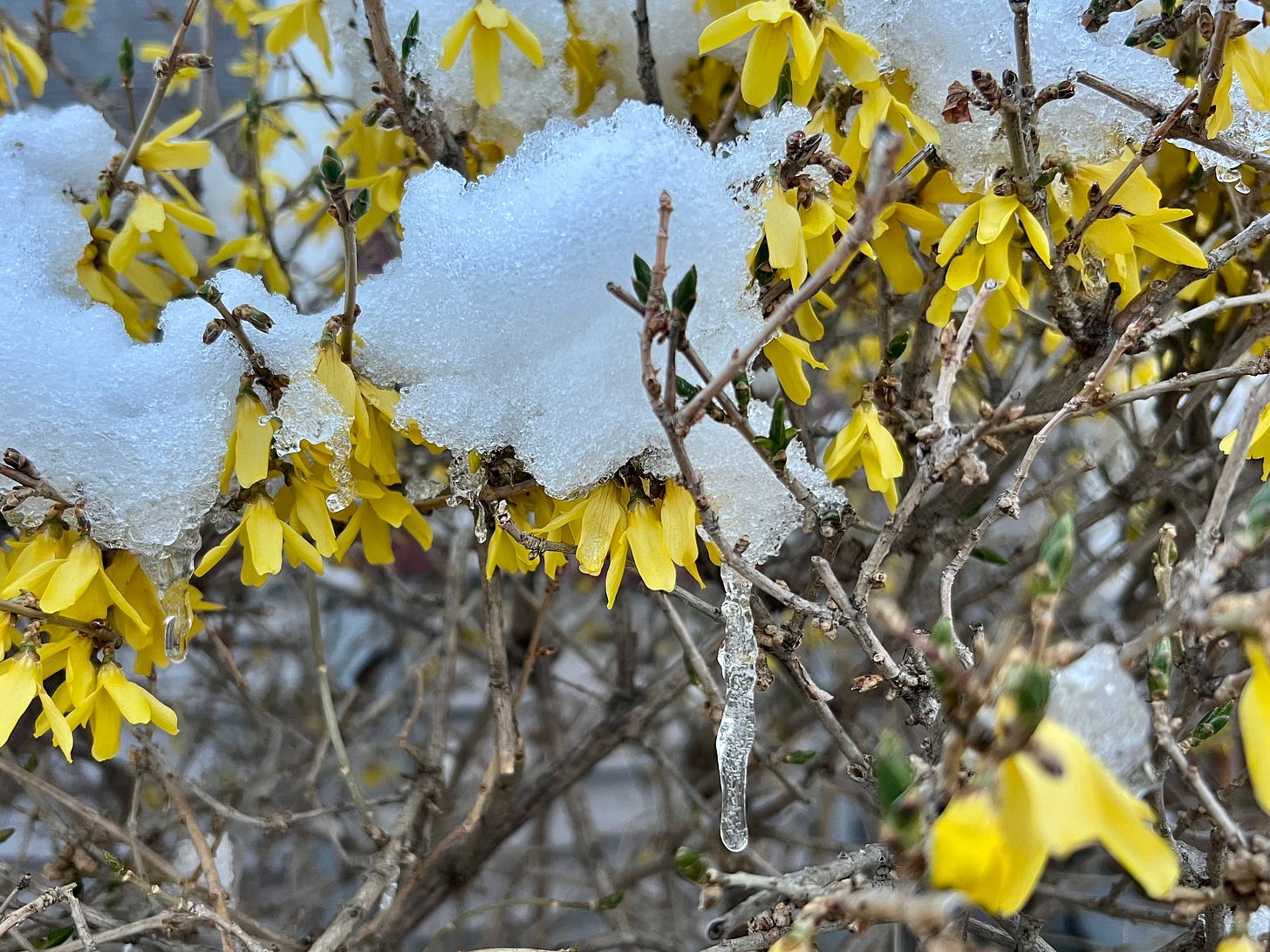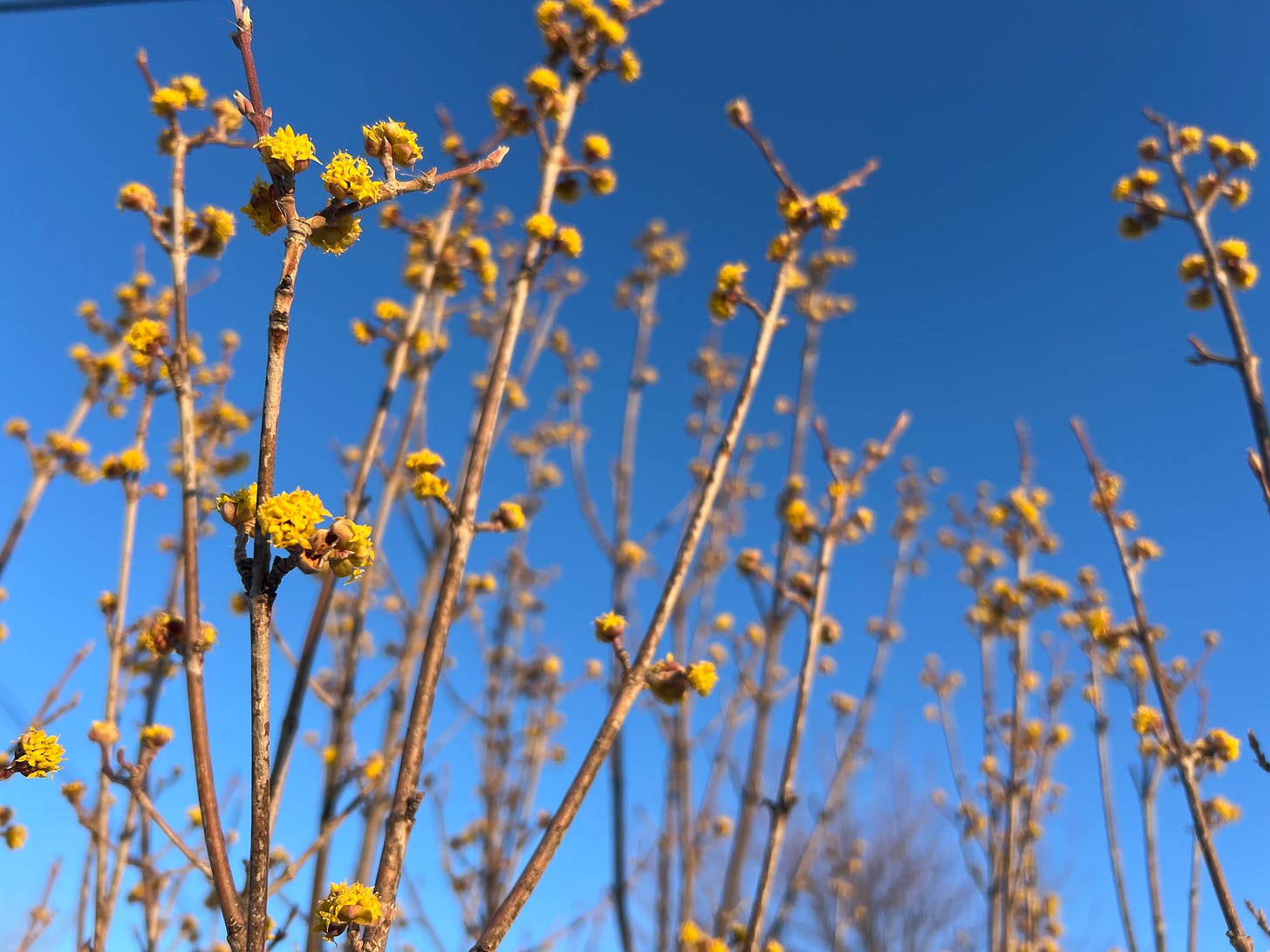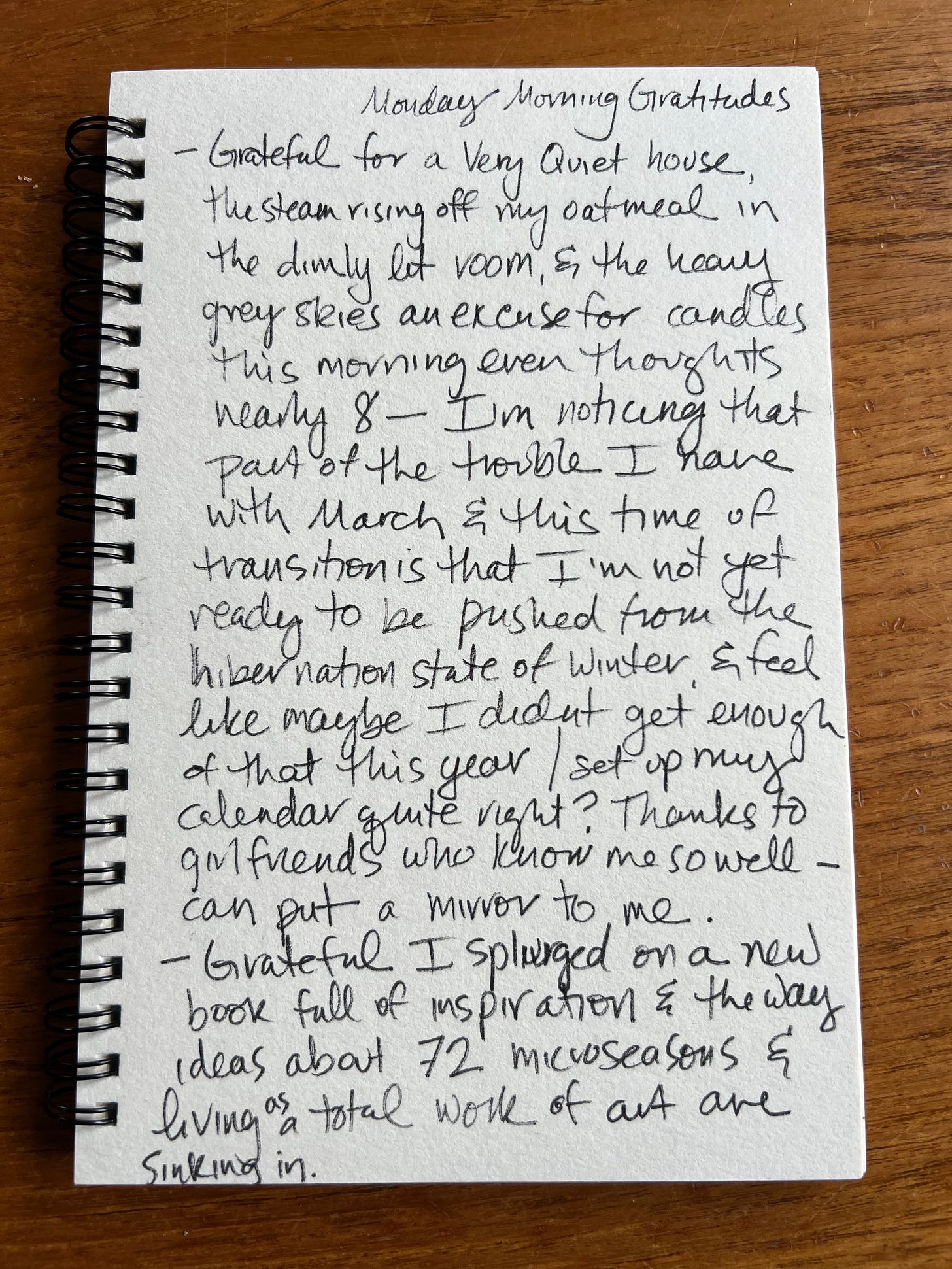Why I hate wind
Grateful for friends who hold up mirrors & books that land like answers
Dear friends and readers,
Today’s writing is part of a series I’m calling Gratitudes. If you haven’t already, check out this post about our human capacity for gratitude (Robin Wall Kimmerer reminds us it is one of our gifts) and my decade+ practice of keeping journals full of my Sunday evening lists of gratitudes. To push that practice deeper, I’ve been taking another look at the Sunday-night list on Monday morning, and sharing some of that here. Scroll down to read and listen to this week’s share.
To expound a little first, I want to tell you about two gifts I received this week. The first came from a friend who knows me and sees me better than most, better than anyone sometimes, it seems. I’m so grateful for her, and for those people in our lives who really see us and love us despite and when the crazy flairs up. When I called her in a bit of an anxious tail-spin, thinking my life had blown off course, she replied, “I know, March is your hard month. It always is.”
In her wisdom, she laughed and said: March is so bi-polar! It’s windy, it’s cold, it’s hot, it’s sunny, it’s raining, it’s snowing!
The gift of her words was a mirror, a reminder of who I am, of what I’m made of, and that we are all always in the midst of cycles. Both our own cycles and the cycles of the seasons. Nothing lasts forever. This might not be a crisis but simply March, and I consistently and dependably feel this way at this point in the year.
Some folks love March and those people tell me over and over about the delights, but I struggle to enjoy this blustery time of transition.
Have I mentioned that I hate wind?
I’m just going to take a minute to tell you that wind is an element that I personally can rarely appreciate. It trips me up and mostly feels like an affront to my spirit. Wind leaves me feeling dry, brittle, breakable, unstable, disoriented, and ungrounded. It is no fault of the wind, or of March in Wisconsin for that matter, it just makes for a tough season. These few weeks of weather don’t suit me and I know it.
When I first learned about the Indian science of Āyurveda, I felt seen. Āyurveda is a sister to the lineages of yoga, all practices tuned toward self-knowledge that have evolved over thousands of years. These are the oldest systems of health care continuously tested in the world. According to Āyurvedic ways of understanding the cycles and systems of the body, there are patterns and tendencies. Each of us is uniquely made up of the elements of life - air, ether, water, earth, fire - and our physical and emotional attributes also have patterns and tendencies. As we get to know ourselves, and our personalities, we can work to find balance and health, both physical and mental. There are ways of categorizing our individual physical and mental constitutions, and in Sanskrit they are called doshas
So now you might be curious: What does this have to do with wind or me?
One of the the three doshas is called vata, which consists mostly of the two elements air and ether. My physical and mental constitution includes a lot of vata. I get very overwhelmed and distracted by this cold wind pummeling my already airy, light, and energetic self. Hopefully without sounding too whimpery, I can conclude by saying: March is just a lot for me.
If you want to know more, it’s an easy thing to Google. Try Healthline, What are the Ayurvedic Doshas for the basics. However, after taking whatever internet quiz you hit on, I highly recommend a more personalized approach. In Wisconsin, where I live, we are lucky to have Andrea Russell, a remarkable teacher and Āyurvedic doctor.
That’s all a nutshell’s worth of thoughts on why, for me, this time of year is challenging, but that I also believe that noticing the patterns is helpful. I’m here to liberate the spirit and light up the brain, so I’ll keep paying attention.
The Art of Noticing
One day a couple of months ago, on a complete whim, standing in my kitchen with my coat and hat still on, I quickly tapped credit card details into my phone to pre-order a book I felt like I needed to own. “STILL: The Art of Noticing” arrived this week, thankfully.
The artist, Mary Jo Hoffman, is based in St. Paul, Minnesota. She started posting a photo of nature everyday in 2012. She has never, not once, missed a day.
This week it landed in my mailbox just exactly when I desperately needed to SEE the particulars of this bi-polar season of the north!
It’s such a beautiful book.
Her way of seeing stops me in my tracks. It makes me fall in love with the mundane specialness of this wider northern bioregion over and over again.
Though I have no stake in it exactly, I want to recommend this book to everyone. I think it will change you, if it’s what you need, and I fully believe that the “art of noticing” is the connective tissue we all need. It’s a mirror. It’s meditative. It’s a path of self-knowledge. It’s a prescription for healthy living.
A section of the book is presented as an ode to the seventy-two microseasons of the north. After years of daily noticing, Hoffman connected her way of seeing with other ancient ways of understanding the nuance and subtley of the characteristic annual patterns. These little chunks of time in nature’s cycles offer bursts of unfurling and revealing that last about five days. Such as the few days when lake ice becomes gunmetal grey as it softens and breaks apart. And when birch catkins dangle from bare branches, when leaf buds bulge with running sap, and when bulb shoots climb through soil.
There is more to March than the wind. These are the days just following the equinox (March 21-April 4), as sunlight expands the world. Unlocks it.
Hoffman describes the winds carrying the sounds of early songbirds, who begin singing to mark territory.
Sparrows are always first, she says.
Sandhill cranes are returning to last year’s nesting grounds.
Rhubarb emerges.
Maples begin to flower.
Pollen drifts on the wind.
Words like poetry alongside photos you could gaze into forever searching for the meaning of life. And then, with such generosity and integrity, she writes about her search for a total work of art. Her search, she writes, is for a point when there is “a single spun thread of living as art, and art-making as a life, in which everything counted and everything contributed and it mattered how you approached the greatest questions of life as much as it mattered how you addressed a letter….”
I am so grateful for the reminders that the breakable, unstable, and disoriented parts of me are part of the whole, and it all counts for something.
And though I may not have mentioned it yet, I’ve also been on a kick of reading Pulizer Prize-winners, and because more than a few smart folks have recommended I read Pilgrim at Tinker Creek, I am reading it, and so I’ll end with this:
“This is the now. This flickering, broken light. This air that the wind of the future presses down my throat, pumping me boyant and giddy with praise.”
- Annie Dillard, Pilgrim at Tinker Creek
It means a lot to me that you are reading and that you are here. Please share your comments below. I’m so curious how you feel about the season. What are your ways of noticing?
And thank you for sharing this with someone you think would appreciate it, if you feel so moved.
Sincerely,
Note: This VoiceOver is me reading “Monday Morning Gratitudes,” pictured below.







I’m from Corpus Christi, so I know wind as warm and humid and frizz-making, not bone chilling. If I grew up north, I could totally see hating wind.
I just discovered you through @juliegabrielli !
I so enjoyed this read. I love finding people who write on similar topics that I find endlessly fascinating. It’s especially nourishing to find kindred spirits out there. Thanks for introducing me as well to a possible new book to add to my library as well. “STILL: The Art of Noticing” 🥰 I’ve written about being still a lot. Likely because I’m such a busy body with a busy mind but stillness allows all of that wonderful space to both envelop and open us up to more softness, grounding, and creativity. Your words are so lovely and genuine. Excited to read more from you !